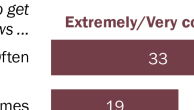The FCC has been reviewing its rules on television station ownership for almost four years but still has not completed its work. During this time, opponents of consolidation have repeatedly appealed to the federal government to stem the tide of consolidation. In 2013, Free Press, Rainbow PUSH Coalition and the American Cable Association separately petitioned the FCC to restrict or deny multiple deals without success. Cable and satellite companies contended that letting broadcast groups acquire more stations would give them an unfair advantage in negotiating retransmission fees. The media watchdog group Free Press argued that allowing buyers to spin off stations to “side-car” companies made a mockery of federal ownership rules. But the FCC questioned only part of one major transaction, the Sinclair purchase of Allbritton, noting that three of the stations being acquired would have been managed under a type of joint operating agreement that is no longer legal. Observers expect those sales to be restructured as shared services agreements to meet current rules.81
The U.S. Department of Justice, which reviewed several major purchases for possible antitrust violations, also found fault with only one aspect of one sale. Gannett, which already owns a network affiliate in St. Louis, was required to sell the Belo station it acquired in that market to an independent third party. The Department of Justice ruled that Gannett’s original plan to operate the station on behalf of another owner would have given the company too much power to demand higher local advertising rates.82
The regulatory climate is changing rapidly, however. New FCC chairman Tom Wheeler, who took office late in 2013, has signaled that current and future deals may face more scrutiny from the commission. One of his first acts was to withdraw a pending proposal to relax the ownership rules that had languished for months. “We’re going to do things differently going forward” on joint services agreements, Wheeler said.83
The Justice Department also is taking a harder line on shared operations. “Such arrangements often confer influence or control of one broadcast competitor over another,” the department’s antitrust division said in an FCC filing. The commission is expected to vote soon on a proposal that would treat some joint sales agreements as the equivalent of ownership. That could unravel some existing agreements, because a single owner is currently prohibited from reaching more than 39% of U.S. households.
Broadcasters, concerned that the FCC will tighten the rules, have stepped up lobbying efforts to preserve joint services arrangements. The National Association of Broadcasters issued a statement saying the Justice Department’s position could “kill jobs and damage the economics of local broadcasting.”84
One controversial proposal the FCC considered but took no action on in 2013 would also have changed the way ownership limits are calculated. A policy that dates back to the days of analog television allows owners to count a UHF station (on channels 14 and above) as reaching half the audience of a VHF station in the same market, because UHF signals were typically weaker. The so-called UHF discount lets broadcasters expand their holdings without running afoul of the 39% limit.
The transition to digital broadcasting and the fact that most consumers no longer watch television over the air85 made a change inevitable, said Mignon Clyburn when she was the acting chairwoman of the FCC. “The technical justification for the UHF discount no longer appears valid,” she said.86
The proposed revision would likely have grandfathered companies like Univision, whose reach would exceed the national limit once the UHF discount was eliminated, as well as broadcasters like Tribune with pending acquisitions that would push them over the limit.87 But the change would have constrained several big broadcasters from growing any larger through the purchase of additional stations. Sinclair, for example, would reach 38.2% of the country without the UHF discount, compared to 21.9% percent under the current system. Fox and CBS would also be close to the limit if the discount goes away.88
Former FCC commissioner Michael Copps called the UHF discount proposal “a wonderful signal” that the government may finally be prepared to tighten the broadcast ownership rules. “I have never been one to pin the blame for where we are solely on the media companies,” he said. “Government’s been asleep at the switch.”
An FCC official said the commission would “move expeditiously” to finish its review of the ownership rules, but there was no clear indication of which way a decision might go.89 And whatever the FCC does, it is likely to face a legal challenge. Efforts to relax ownership limits over the past decade have been repeatedly blocked in court.90
For news consumers, the key issue is what the FCC is going to allow in the interim. “We’ve seen relatively small markets where we’ve seen many of the independent voices disappearing and the FCC appears to say, no problem,” said Bob Papper. “The implications are that absent an FCC that appears to care, we’re going to keep losing originating newsrooms. We’re not going to see stations dropping news but… I think we’re definitely going to see more consolidated newsrooms.”




